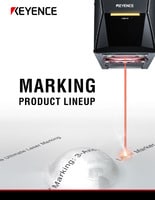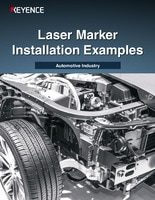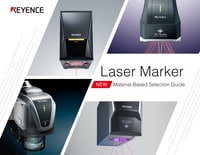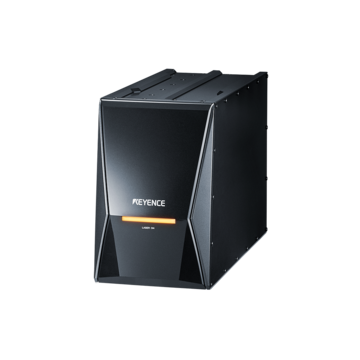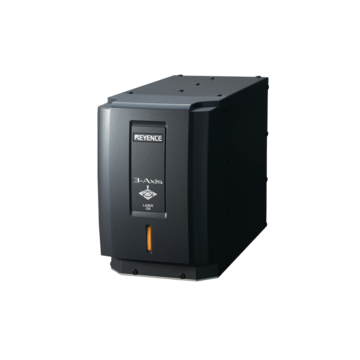Industrial Laser Marking Systems / Laser Markers
Industrial Laser Engraving
Industrial laser engraving has been utilized for decades, as many businesses and industries rely on the technology for various applications. The process of engraving logos, text, barcodes, and other identifying marks is used on metal, wood, acrylic, glass, leather, cardboard, and more. Although the versatility of laser engraving is attractive for many, there are some drawbacks and disadvantages that should be carefully considered.
To help you make an informed decision for your particular needs, we’ll take a look at those considerations and common engraving applications. We will also discuss the characteristics of laser engraving versus other methods, such as laser marking, as well as the best machines for the job.
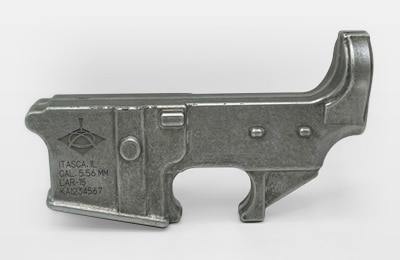
Metal engraving
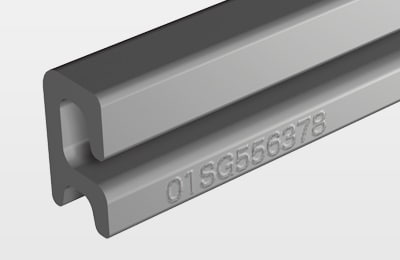
Plastic engraving
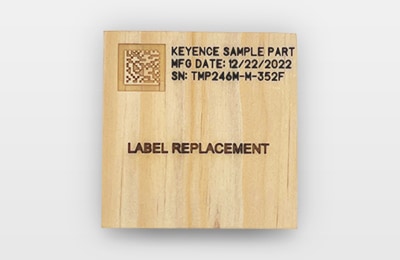
Wood engraving
We’re here to provide you with more details.
Reach out today!

Laser Etching vs. Laser Engraving Machines: Which is Right for You?
When choosing between a laser etching and laser engraving machine, consider the depth and permanence of the mark. Laser engraving equipment creates deeper impressions which is ideal for durable applications. On the other hand, laser etching offers a lighter permanent mark that can be achieved much faster.
Depending on your project needs—whether it's for industrial engravings or smaller applications—a thorough understanding of these differences will guide your decision in selecting the right laser machine for engraving.
What is Industrial Laser Engraving?
Industrial laser engraving is the process of cutting deep, permanent marks into metal, wood, plastic, and various substances by removing material through vaporization. This process creates depth as it displaces the material being used. This method is widely used in manufacturing for applications requiring long-lasting, high-contrast markings that withstand wear, heat, and harsh environments.
Industrial laser engraving is a popular technique used in manufacturing and other business applications for a number of reasons. For one, it allows for quick marking on a wide range of materials. In addition, the running costs for laser engraving are virtually non-existent. Whether it is needed for one item or thousands there is no consumable cost, which reduces long-term operating costs. Lastly, the ability to deeply mark engraved characters that do not fade makes engraving an attractive option for some.
However, there are numerous drawbacks to industrial laser engraving that must be considered. These often steer users away and to different options, such as laser marking. For example, engraving does not work on highly reflective surfaces or rough and curved surfaces, which are found in the parts from many industries. Engraving is also not sufficient for use with small parts or when small characters and fine detailing are required. Despite these considerations, laser engraving remains a great solution for permanent identification and traceability in industrial settings.
Laser Engraving Industries
Numerous industries, including consumer goods, electronics, medical devices, and the automotive sector, heavily rely on laser engraving machines. Because of the machines' accuracy and capacity to produce complex designs on a variety of materials, including metals, plastics, and wood, laser engraving products are advantageous to these industries. Whether for marking serial numbers, logos, or product details, industrial laser engravers deliver consistent quality and efficiency in production lines.
Beyond these, laser engraving is also widely used in aerospace, telecommunications, defense, and industrial manufacturing. The packaging industry benefits from laser systems for traceable and tamper-proof markings, while the jewelry and fashion industries use them for branding and design customization. Even sectors like agriculture, energy, and construction have adopted industrial laser engraving for equipment labeling and component tracking.
Benefits of Using Industrial Laser Engraving Machines
Investing in an industrial laser engraving machine offers numerous advantages. High precision allows for intricate designs without compromising speed. Additionally, product traceability and compliance are improved while material waste and operating expenses are decreased. Engraving laser machines produce marks that are long-lasting and durable, which makes them perfect for applications that require permanent, high-quality impressions.
Laser engraving machines work on almost anything—metals, plastics, ceramics—you name it. They deliver the same high-quality results regardless of what material you're marking and working with. These workhorses rarely break down or need repairs, keeping your production lines moving and saving money over time.
How Industrial Laser Engraving Machines Improve Marking Quality
An industrial laser engraver machine integrates advanced hardware, software, and automation for various applications and within many industries. These systems are widely used and come in many configurations. In fact, some laser engraving systems, or laser marking systems, have over 1,000,000 configurations, allowing for precision marking for a myriad of projects.
For businesses, high-quality engraving systems and machines make it easy to customize things to their particular needs, ensuring markings meet specific industry requirements. These systems often make it easier to operate and learn, featuring intuitive controls and automated workflows that simplify operation and reduce training time or costs. Some systems also allow for multiple laser processes to occur without needing more than one unit. For example, the machine may have the ability to handle multiple processes, such as engraving and laser marking. This means a single system can handle both engraving and laser marking, streamlining production and increasing efficiency.
Discover more about this product.
Click here to book your demo.

Common Applications of Laser Engraving in Industries
Laser engraving is an efficient, precise process that is used for a variety of manufacturing applications. One common use case is for product marking and identification. This includes serial numbers, barcodes, QR codes, and other identifying information. As a result, products can be tracked throughout the manufacturing process and supply chain.
Manufacturers also use laser engraving to add numbers to components and parts. This simplifies inventory management and ensures accurate assembly. For those who are looking to add logos, names, and other branding elements to products, laser engraving can enhance product recognition.
Various materials used for labeling, signage, and other purposes often get engraved with text and graphics. In the medical industry, medical instruments and devices are engraved with identification information. This ensures companies are compliant with regulatory standards. Industrial laser engraving is particularly useful for surgical instruments, as the marks remain readable despite frequent sterilization and exposure to harsh cleaning agents.
Another use case for laser engraving is for automotive parts. Manufacturers mark engine components, chassis, transmissions, and many other parts that make up cars and trucks. This process aids in both quality control and helps prevent costly recalls. Engraved markings also improve counterfeit prevention. As a result, only authentic parts are used in vehicle production and repairs.
Laser engraving is also helpful when it comes to tool and die-making. This process is used to create molds, dies, and tooling with intricate designs and fine details. The precision of lasers ensures accuracy in the final products. Laser engraving can even extend tool life by minimizing mechanical wear.
Lastly, electronic manufacturing commonly uses laser engraving for marking electronic components, circuit boards, and connectors. By doing so, a permanent and high-contrast mark provides lasting and consistent results. This is necessary for traceability in electronics manufacturing, for example, to help with authenticity and compliance with safety standards.
Beyond these few examples, laser engraving is being used across industries for many useful purposes. Regardless of your particular manufacturing needs or application, choosing the right laser engraving machine has many considerations.
Choosing the Right Laser Engraving Machine for Your Needs
Laser engraving machines combine software and laser beam technology to add desired markings to materials. This equipment is commonly used due to the low initial cost and ability to create your desired engraving quickly. However, selecting the right laser engraving machine depends on factors such as material type, marking depth, speed, and industry-specific requirements. Understanding the capabilities of different models can help ensure optimal results for your application.
Below is an overview of two common models, the 3-Axis Hybrid Laser Marker MD-X Series and the 3-Axis Fiber Laser Marker MD-F Series.
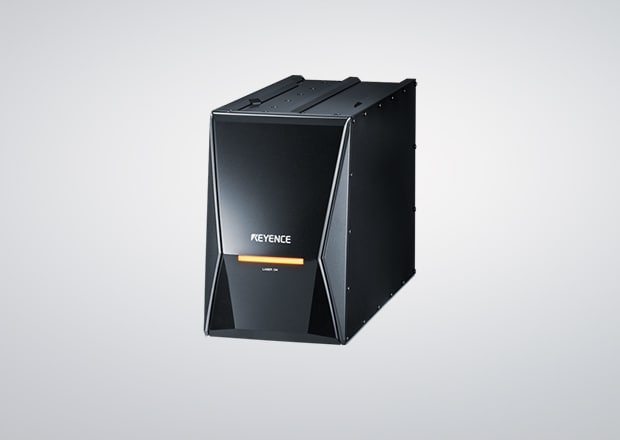
3-Axis Hybrid Laser Marker MD-X Series
The 3-Axis Hybrid Laser Marker MD-X Series combines the strengths of a conventional fiber laser with those of a YVO4 system. Fiber lasers are designed for long service life and high output power for high-speed marking and deep engraving applications. YVO4 lasers are designed for high-quality, delicate marking and increased depth of focus for flexibility. Together, these lasers create the MD-X with high peak power and a short pulse laser.
Combining these two marking methods creates a laser that is powerful enough to meet stringent cycle time requirements but also robust enough to achieve quality engravings on any metal. This makes it an excellent choice for industries requiring precise, durable, and legible markings, such as aerospace, automotive, and medical device manufacturing. Paired with KEYENCE's 3-Axis control, full field auto-focus, and automatic position adjustment, the MD-X Series is ideal for any metal engraving need.
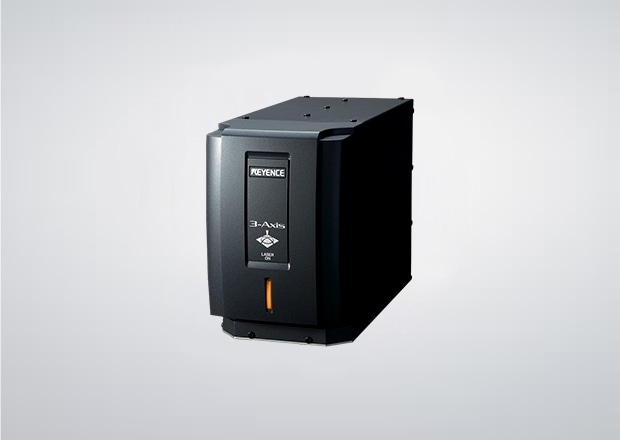
3-Axis Fiber Laser Marker MD-F Series
The 3-Axis Fiber Laser Marker MD-F Series delivers extremely high output power in a compact and rugged design. Fiber lasers are designed for long service life and high output power, which excel at high-speed marking and deep engraving applications. The robust design of the MD-F leads to an IP-64 rating, ensuring that it can be installed and last in any environment.
The combination of the high output power and 3-Axis technology makes the MD-F Series exceedingly proficient when it comes to deep engraving. With a feature referred to as "Deep Dig", the MD-F can use its 3-Axis technology to stay focused on the engraving surface, even as it is reaching new depths. A capability like this is useful for industries requiring permanent, tamper-proof markings, such as heavy machinery, defense, and industrial manufacturing.
Here is the common process for laser engraving machines:
- A design is created and added to an engraving computer software program.
- The item that is going to be engraved is placed inside the machine’s tray.
- The machine is focused and calibrated to the desired parameters for the project.
- Once started, the machine’s laser continually passes over the specified area and marks the surface.
Additional considerations when selecting an industrial laser engraving machine include ease of integration into existing production lines and automation capabilities. Choosing a machine that offers advanced features like real-time monitoring can improve operations.
Get detailed information on our products by downloading our catalog.
View Catalog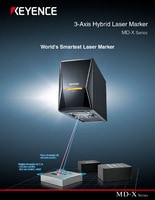

Common Materials Engraved Using Laser Technology
Industrial laser engraving works with many materials, making it a popular choice. Metals such as stainless steel, aluminum, titanium, and brass are commonly engraved for part identification, compliance labeling, and branding. Plastics like ABS, polycarbonate, and acrylic can be precisely marked without compromising structural integrity (which is ideal for electronic components and medical devices).
Glass and ceramics are frequently engraved for product branding, measurement markings, and decorative designs. Wood and composites are used in signage, packaging, and custom manufacturing applications. Even coated materials, including anodized aluminum and painted metals, can be laser-engraved without damaging the protective layer.
Why Choose KEYENCE for Laser Engraving Machines?
KEYENCE laser engravers are distinguished by their state-of-the-art technology and intuitive user interfaces. These advanced machines can work with a variety of materials and engraving depths, guaranteeing that they will be the ideal match for your projects.
A top choice for businesses in need of reliable, high-performance laser engraving solutions, KEYENCE’s engraving machines enable you to benefit from features like deep marking, high-speed operations, 3-Axis control, full-field auto-focus, and automatic position adjustment. With industry-leading durability and efficiency, KEYENCE engraving machines provide unmatched quality and consistency for demanding industrial environments.
Maximizing Productivity with KEYENCE Industrial Laser Engravers
To maximize productivity, KEYENCE industrial laser engravers integrate seamlessly into your production lines. Rapid switching between various engraving tasks is made possible by their effective operation, which reduces downtime. Training time can be cut down with easy and intuitive controls for operators of all skill levels. KEYENCE's engraving laser machines can truly enhance workflows and ensure uniform product quality. As a result, costs can be reduced while productivity or throughput improves.
As discussed, KEYENCE offers both 3-Axis Hybrid and Fiber Laser Marking (the MD-X and MD-F Series), which are well-equipped for deep engraving. Both laser markers reduce cycle times, improve output quality, and increase productivity through accurate, fast engraving. Our 3-Axis technologies offer flexibility in handling different materials and depths while preserving focus and engraving clarity. All of this is possible without requiring frequent manual adjustments.
Contact us to learn more about how our advanced technology can help take your business to the next level.
Contact Us
FAQs about Laser Engraving
Why use laser engraving?
Laser is utilized in a variety of industries and applications to ensure tracking and traceability. Manufacturing companies have an increased focus on tracking and traceability since the dawn of the information era. Laser engraving provides superior mark longevity and repeatability compared to the alternative methods in the market.
What type of laser is best for engraving?
The best laser for engraving depends on the target material of interaction. For industrial laser engraving machines for metal, a fiber laser is industry standard for high-quality engraving. When considering plastic and resin components, CO2 laser marking and UV laser marking enter the discussion. There are a lot of variables that contribute to a quality interaction between a laser and its target material. Free onsite testing provided by KEYENCE will help you identify the solution of best fit.
How does laser engraving differ from mechanical engraving?
Laser engraving provides superior reliability, speed, and precision in comparison to its mechanical engraving alternatives. Mechanical solutions are prone to tool wear and require consistent preventative maintenance to ensure reliable performance. Laser engraving solutions typically have a higher upfront cost, but once justified, they present lucrative ROI opportunities.
What are the different types of laser engravers available in the market?
There are a few different classifications when it comes to laser engravers. Gantry vs. Galvo refers to how the laser beam is presented to the intended target. Gantry lasers have a laser head with x and y movement, whereas Galvo lasers utilize mirrors and a stationary head to redirect the beam to the desired location. Secondly, you'll need to consider the wavelength. Deep infrared (CO2), infrared (Fiber), green, and ultraviolet (UV) lasers are industry standard. Finally, there is the pulse duration. Nanosecond lasers are the most common, but femto and pico second lasers have started to enter the market.
We’re here to provide you with more details.
Reach out today!

Related Downloads
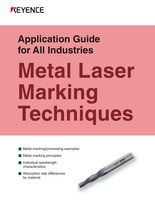
This quick guide introduces the basics of metal marking. Learn why different wavelengths matter and discover the various ways laser light interacts with metal parts.
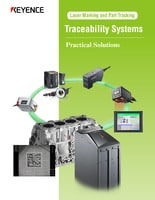
2D codes have become a near-universal standard for traceability. This must-read document covers everything from code scanning principles, laser installation, predictive maintenance, and more.
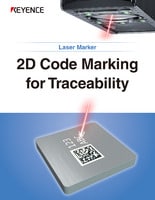
2D codes are used to store date codes, lot codes, serial numbers, and more. Users who are considering 2D code marking should read this laser marking guidebook.
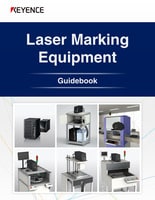
Some laser marking applications require integration with multiple devices. KEYENCE provides a total marking solution, from X/Y stages and indexing systems to head traversal systems. Learn more in this brochure.

